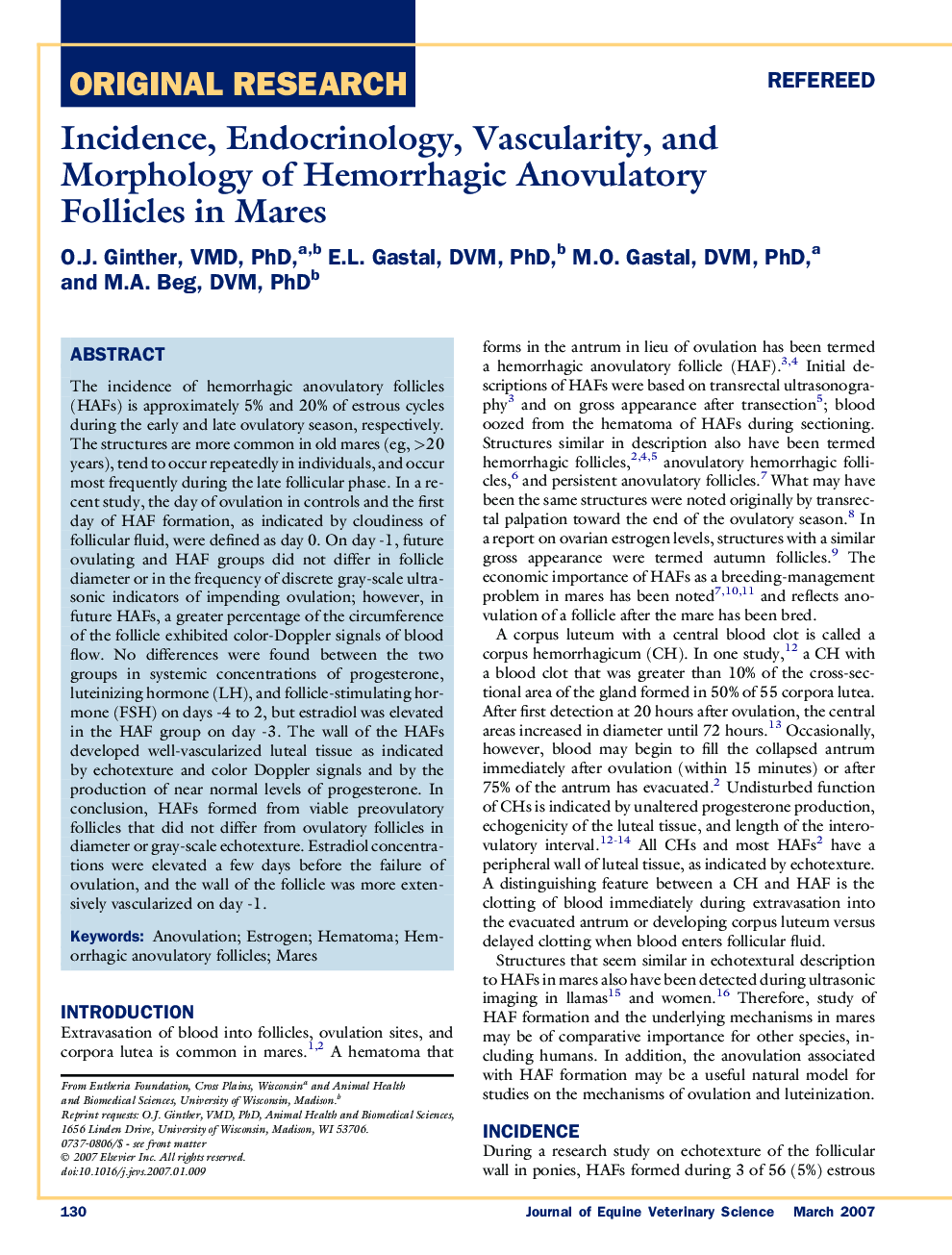| Article ID | Journal | Published Year | Pages | File Type |
|---|---|---|---|---|
| 2396701 | Journal of Equine Veterinary Science | 2007 | 10 Pages |
The incidence of hemorrhagic anovulatory follicles (HAFs) is approximately 5% and 20% of estrous cycles during the early and late ovulatory season, respectively. The structures are more common in old mares (eg, >20 years), tend to occur repeatedly in individuals, and occur most frequently during the late follicular phase. In a recent study, the day of ovulation in controls and the first day of HAF formation, as indicated by cloudiness of follicular fluid, were defined as day 0. On day -1, future ovulating and HAF groups did not differ in follicle diameter or in the frequency of discrete gray-scale ultrasonic indicators of impending ovulation; however, in future HAFs, a greater percentage of the circumference of the follicle exhibited color-Doppler signals of blood flow. No differences were found between the two groups in systemic concentrations of progesterone, luteinizing hormone (LH), and follicle-stimulating hormone (FSH) on days -4 to 2, but estradiol was elevated in the HAF group on day -3. The wall of the HAFs developed well-vascularized luteal tissue as indicated by echotexture and color Doppler signals and by the production of near normal levels of progesterone. In conclusion, HAFs formed from viable preovulatory follicles that did not differ from ovulatory follicles in diameter or gray-scale echotexture. Estradiol concentrations were elevated a few days before the failure of ovulation, and the wall of the follicle was more extensively vascularized on day -1.
